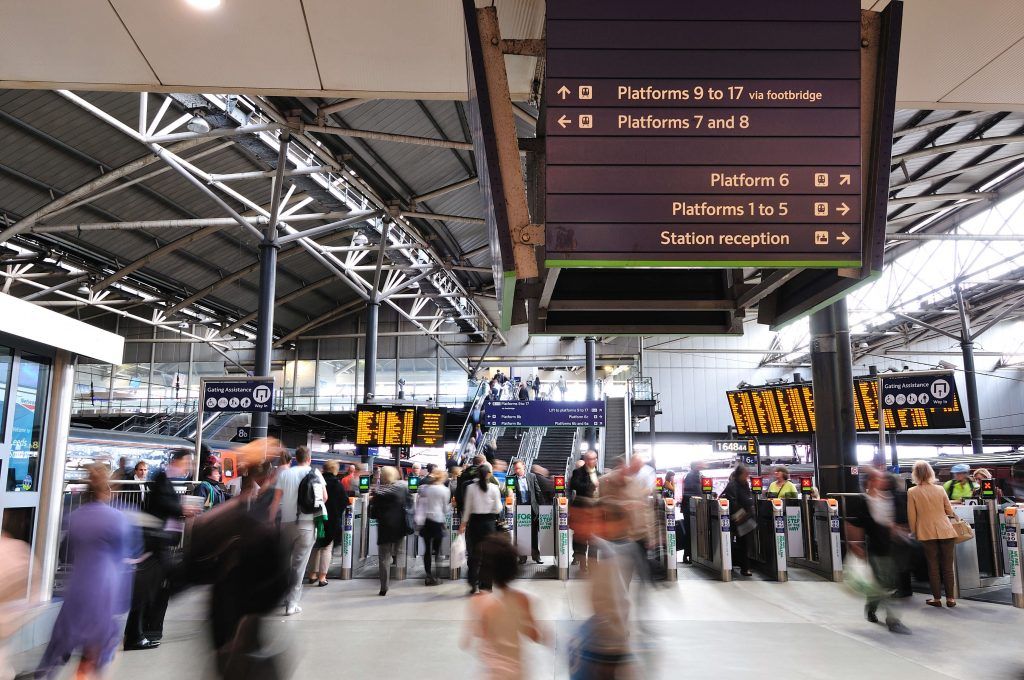How Can Public Realm Security Schemes Be Future-Proofed?

A residential trend that has defined the past century has been increased urbanisation, with more and more of us flocking to cities as opposed to towns and villages, which was previously the norm. Indeed, while only 10% of the population lived in cities in 1900, this number rose to 50% in 2007 and, by 2050, it is predicted that 75% of us will inhabit urban spaces.
This step-change will increase population density, which in turn puts the public under greater threat of terrorist attack, as would-be terrorists can target large groups more easily. This is particularly true for post-industrial cities where large-scale public events have become a key part of cultural life while city squares and promenades have become tourist destinations in their own right. Our cityscapes are also likely to significantly change in look and feel over time to cater to changing needs; the temporary pedestrianisation of Manchester’s Deansgate district being one of the most recent examples of this. This took place to encourage shoppers back to the prestigious shopping area of Manchester following the Covid-19 pandemic and lockdowns in the UK. This scheme allowed pedestrians to socially distance, safely behind certified security barriers.
Subsequently, there is a real need for security solutions that both keep citizens safe from attack in the short term as more areas are pedestrianised, causing a vulnerability, but, can be adapted and built upon in the future in line with changing uses and expectations from the urban landscape. How to best go about this?
Balancing functionality with aesthetics
The perception that a public space is protected and cared for can be a major contributor to deterring criminal activity; an assertion that has roots in the famed “Broken Windows” criminological theory, which links evidence of neglect and disorder with subsequent occurrences of crime. Essentially, if a public space looks uncared-for, it is more likely to be an area in which crime occurs.
However, too much security in an area can also have a significantly negative impact – creating an oppressive “fortress mentality” that intimidates the public. When implemented correctly, security products should offer a sense of reassurance and comfort, without detracting from the design of the wider area or creating fear in those who frequent the space, meaning that the right balance must be struck.
Putting this into practice means that the needs of all stakeholders must be considered when planning security schemes in order to ensure the measures deployed are feasible operationally and aesthetically, both now and in the future. Consider vehicle traffic in and out of the area – particularly emergency access – and the reasons for this, as well as whether pedestrians and cyclists frequent the site and how important it is to make them feel welcomed. This in part will determine the type of security measures to be utilised, such as bollards, or perhaps subtler measures such as crash-tested street furniture would be more suitable in the long-term.
Working together with key stakeholders
When working on a public realm security scheme it’s important to ensure the needs of all are taken into account. This minimises the chance of security measures needing to be replaced to accommodate changing urban spaces. Providers should look to work in partnership with local stakeholders, such as local authorities and Counter Terror Security Advisors.
Working together in this way will mean that security providers can glean expert advice and invaluable insights from local decision-makers, ensuring that the safest, most cost-effective, and future-proofed security measures possible are deployed. If funding allows, suppliers, can also work directly in partnership with architects to develop entirely bespoke schemes, tailored to the exact needs of a particular urban space, ensuring it fits in with its surroundings and has longevity.
Working in close partnership will also help to ensure that all relevant parties are aware of long-term development aspirations and any pending and successful planning applications, which will affect surrounding areas and possibly change the landscape over the course of 5-10 years. This in turn means that providers can plan security provision accordingly and be prepared for any future work needed if roads or highways should change, or there is a change of use to a neighbouring site.
Consider long-term sustainability of security solutions
When it comes to public realm security there is little use deploying solutions that are likely to become outdated quickly, or frequently break down. To this end, any automatic security systems deployed must be properly maintained for longevity and reliability.
To accomplish this, it is crucial for customers to establish a strong, long-term working relationship with their service provider of choice. If the right partner is chosen from the outset, they will be on hand for the entire product life cycle, as well as for any operational changes or security alterations.
Another way to accomplish this longevity is to select static security products that, where needed, can be easily removed, and reinstalled, and still certified if urban layouts change in the future. These solutions, such as shallow mounted lift-out bollards, give a more flexible solution that can be adapted in line with cities’ changing needs. Temporary security measures can also be utilised if threat levels are only intermittent in line with seasonal or annual events.
Overall, as our cities continue to evolve to consider the changing needs of their inhabitants, it is clear that the security systems deployed must be functional now, while also able to adapt to future change. By working in partnership with security suppliers, architects, planners and local authorities, security providers can ensure the right products are available at the right time for every project, future-proofing our cities and keeping the public safe.
)
)